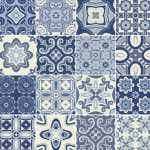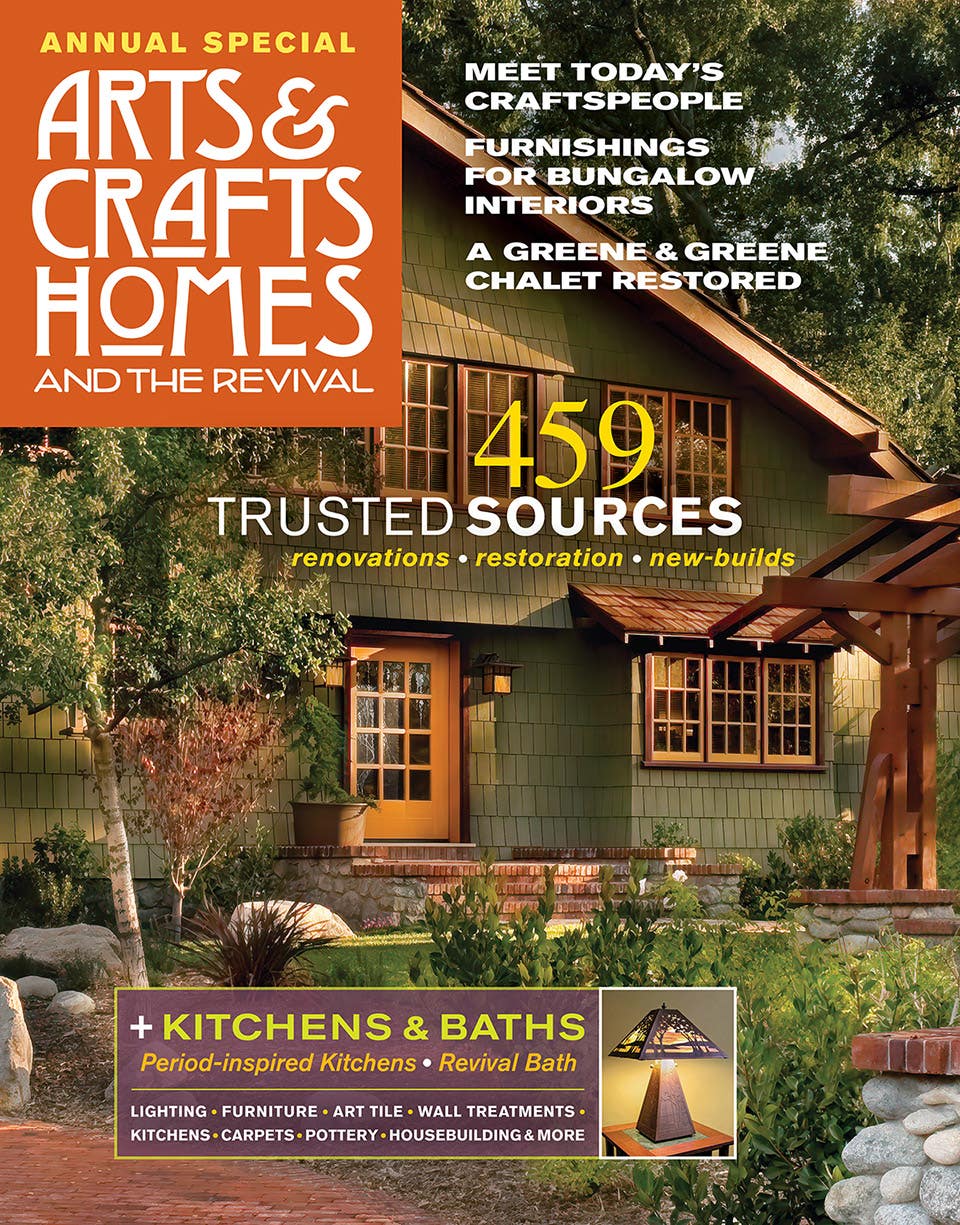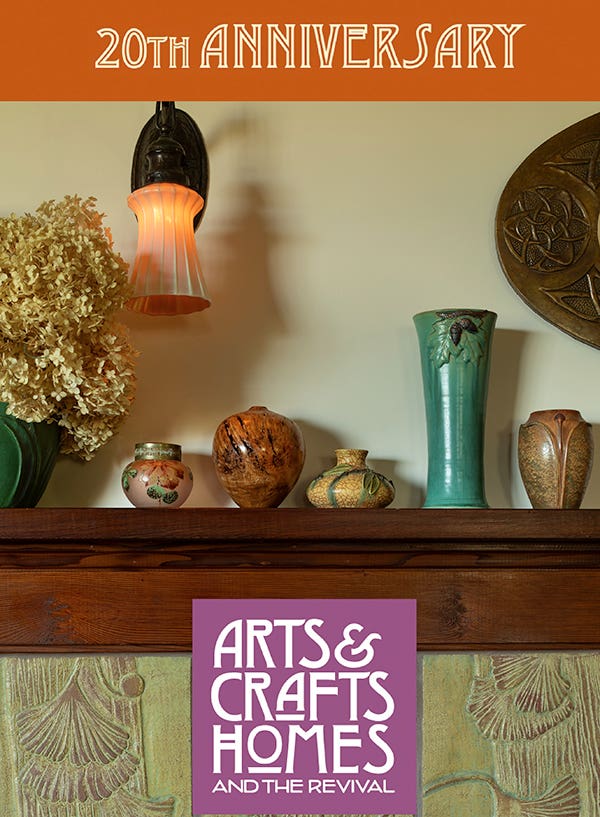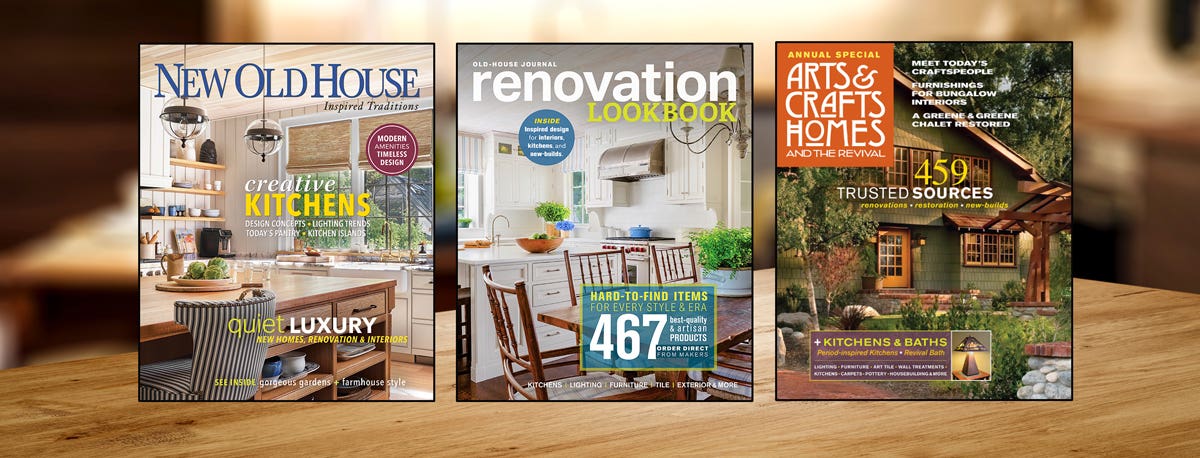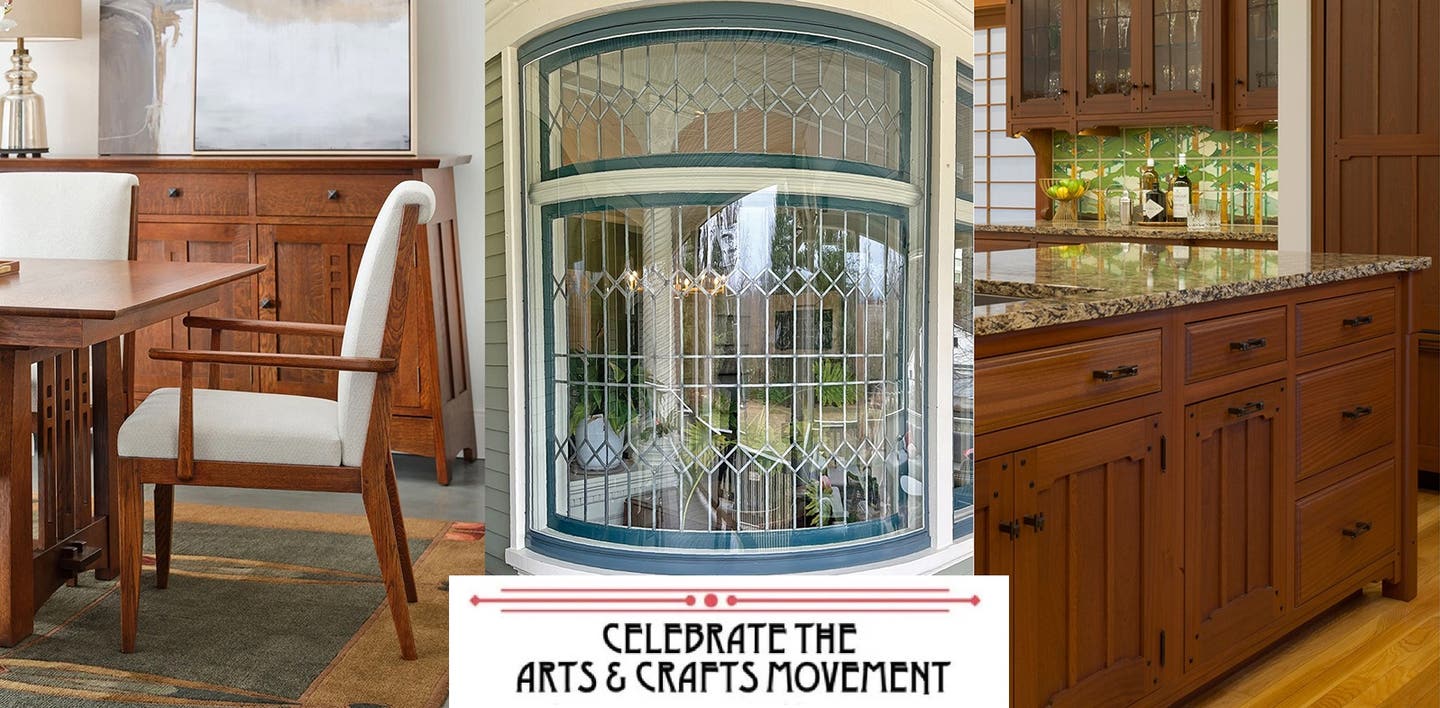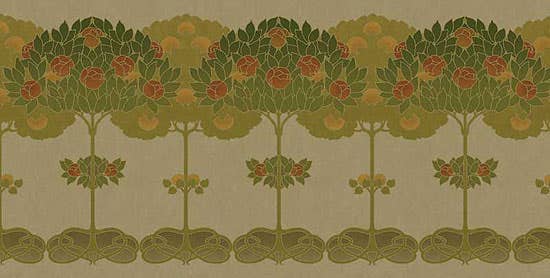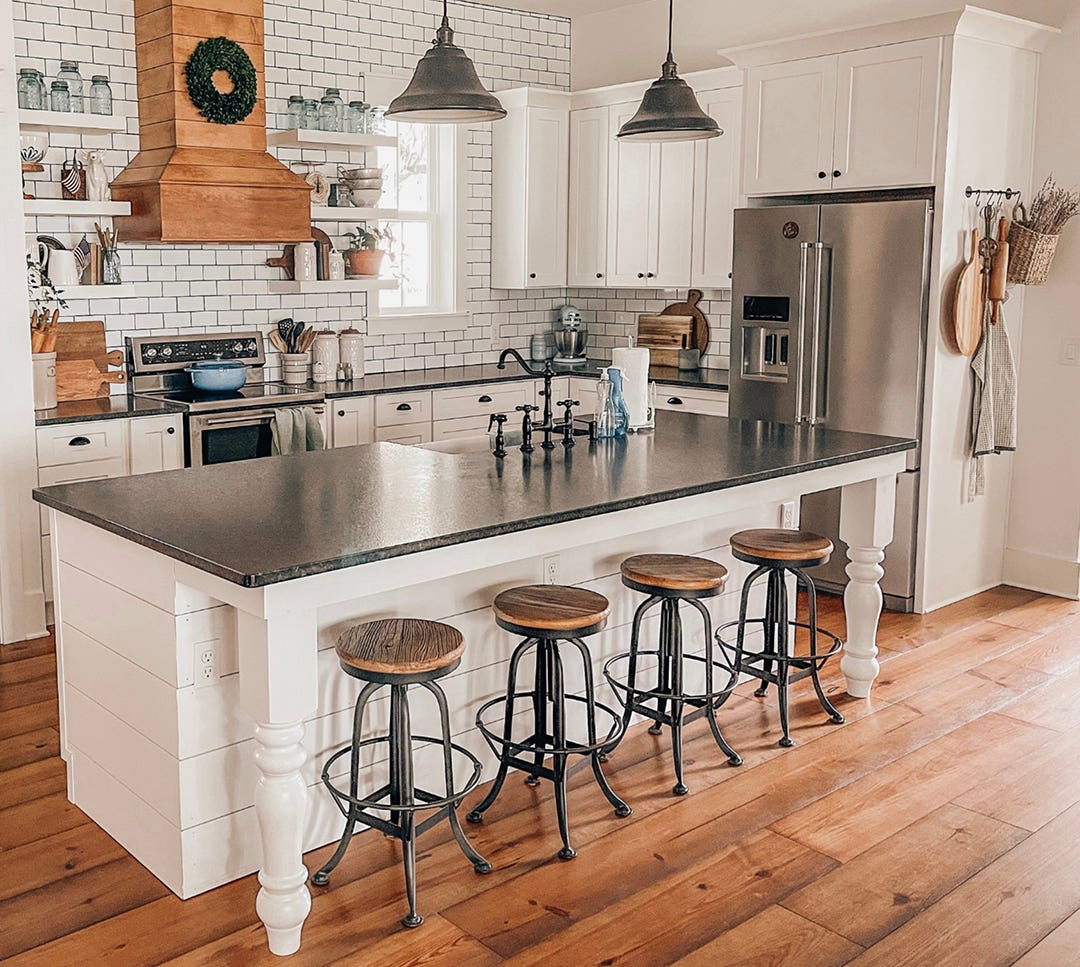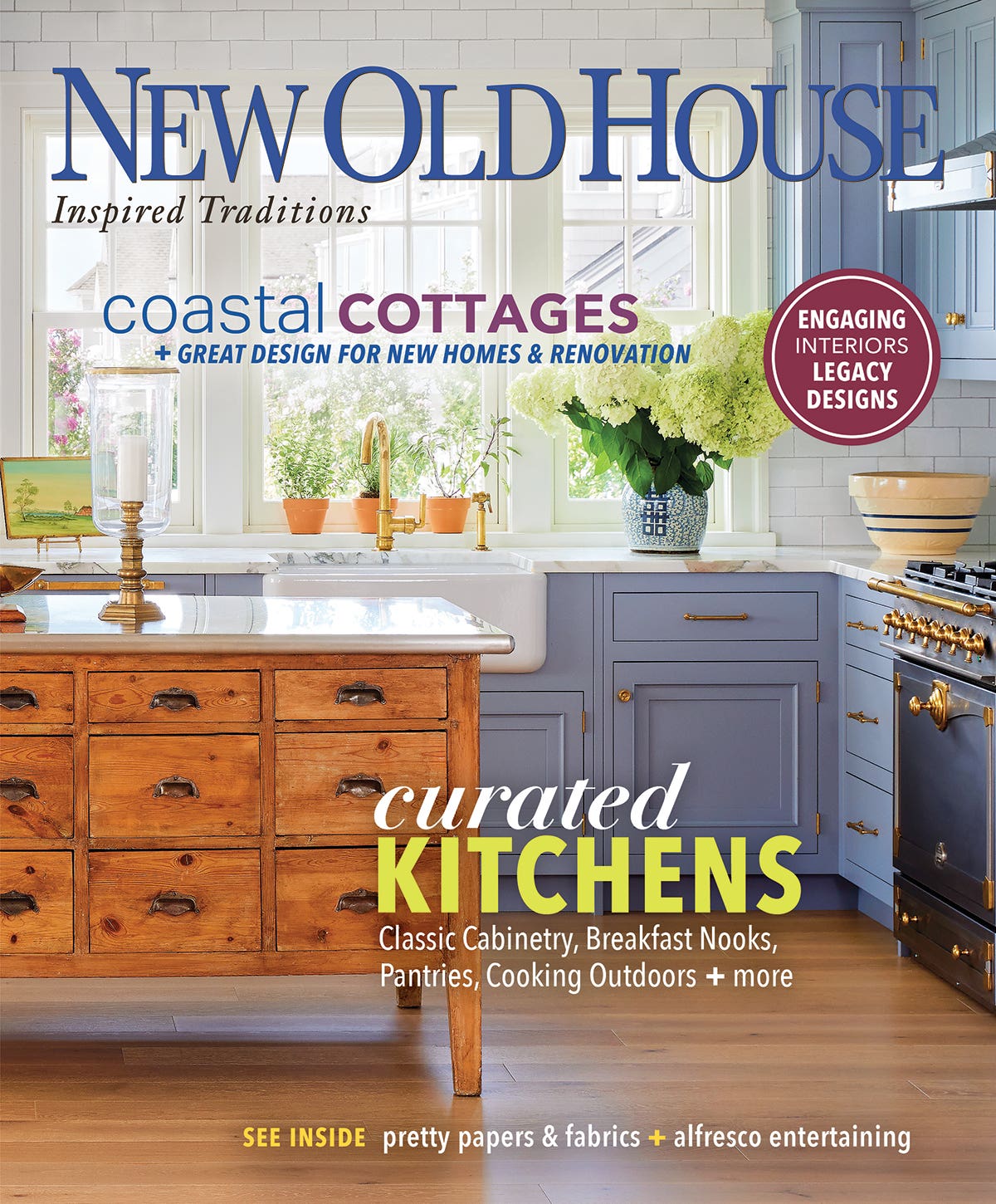The Yearning for Beauty and Good Work to Do
The Arts & Crafts revival is so in tune with basic human desires for beauty and good work, I think it may never end.
A Note from the Editor:
The Arts & Crafts revival is so in tune with basic human desires for beauty and good work, I think it may never end.
Dear colleagues and readers,
Twenty-five years ago, I seriously considered starting a modest publication to be called “The Bungalow Letter.” It would be for freethinkers who had rediscovered the comforts of unfussy post-Victorian houses. I did a little bit of what passed for market research. Barely a response! I gave up the idea. (Oh yes.)
The bungalow movement has, of course, threatened to overrun a general Arts and Crafts revival—one so in tune with basic human desires for beauty and good work, I think it may never end. (I also think today’s revival in the future will be seen as a continuation of the original movement—with the California Ranch, the1960s and the back-to-the-land movement and environmental awareness all part of the continuum—but that’s an argument for another time.)
We can’t define Arts & Crafts style—there are so many strains, and besides, “it’s against our religion.” Yet we seem to know it when we see it. Some people pick up our magazine or visit our website to learn more about the style, to help them decorate their houses to look like the Arts & Crafts Bungalows in the movies and on TV. That’s okay, that’s wonderful. I expect that in learning about the roots of the movement, and its practitioners (then and especially now), and the integration of work and art and life, people will go beyond a quest for “style” and be enriched.
Subscribe to Arts & Crafts Homes, or pick up an issue at your favorite bookstore or newsstand. Order back issues through the Old-House Bookstore or call (800) 850-7279.
The revival goes beyond oak furniture and turn-of-the-century bungalows to interpret, too, British art movements of the late 19th century, Art Nouveau, international A&C strains, the vernacular, and even today’s design. The revival that began gaining speed in the early 1970s has lasted longer than the original period—and it is producing work equal to better than that of a hundred years ago. It’s an honor to publish it, and it is my pleasure.
Patricia Poore,Editor
ppoore@homebuyerpubs.com
10 Harbor Rd., Gloucester, MA 01930
Patricia Poore is Editor-in-chief of Old House Journal and Arts & Crafts Homes, as well as editorial director at Active Interest Media’s Home Group, overseeing New Old House, Traditional Building, and special-interest publications.
Poore joined Old House Journal when it was a Brooklyn-brownstoner newsletter in the late 1970s. She became owner and publisher and, except for the years 2002–2013, has been its editor. Poore founded the magazines Old-House Interiors (1995–2013) and Early Homes (2004–2017); their content is now available online and folded into Old-House Journal’s wider coverage. Poore also created GARBAGE magazine (1989–1994), the first unaffiliated environmental consumer magazine.
Poore has participated, hands-on, in several restorations, including her own homes: a 1911 brownstone in Park Slope, Brooklyn, and a 1904 Tudor–Shingle Style house in Gloucester, Massachusetts, where she brought up her boys and their wonderful dogs.
